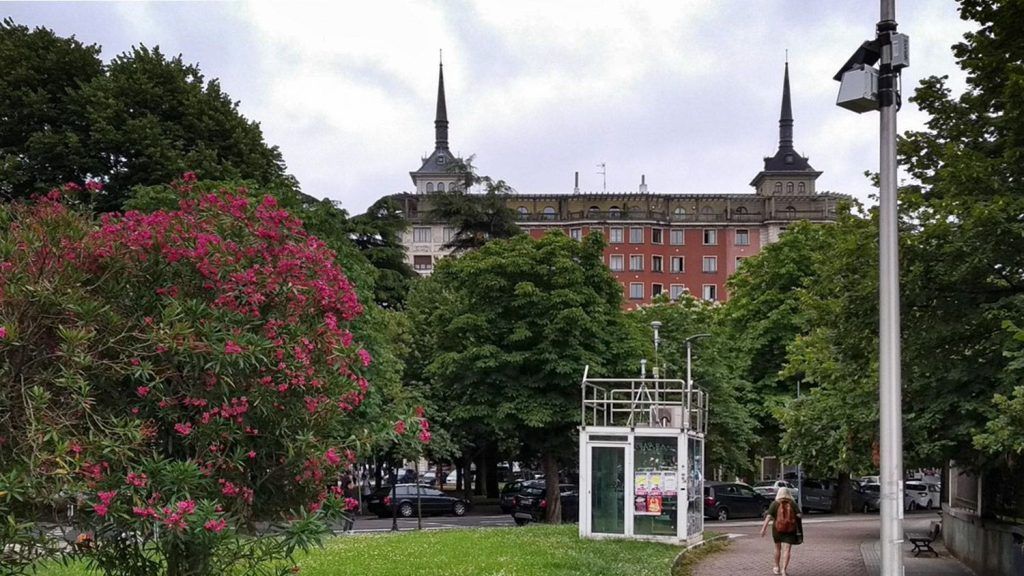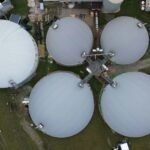- The city of Donostia-San Sebastián seeks to make the most of all the advantages derived from ICT technologies.
- From an air qualityAir quality refers to the state of the air we breathe and its composition in terms of pollutants present in the atmosphere. It is considered good when poll...
Read more perspective, the periods of high pollution are unusual, since its coastal location facilitates the dispersion of pollutants. - This city holds a network of 6 monitoring stations which belong to the Basque Government Air Quality Network, which is now being extended through the SmartKalea project.
- The installed urban air quality sensorMeasuring air quality is essential for improving human and environmental health. Changes in the natural composition of the air we breathe are common in ind...
Read mores will make it possible, for example, to know in more detail the effects of traffic or of industries nearby.
The use of urban air quality sensors, configuring small, highly versatile monitoring stations, is highly recommended for collecting data about pollution in cities. As they are easy and quick to install, they can detect hot spots, thus contributing to protecting the environment and the architectural heritage.
Similarly, its continuous use can help improve the citizens’ quality of life. This factor becomes especially relevant when considering that, in 2050, 70% of the world’s population will live in urban areas and that every year pollution causes 8 million premature deaths.
SmartKalea project: analysing the role of urban air quality sensors
As mentioned, these small air quality monitoringControlling air quality is an essential task in order to enjoy optimal environmental conditions for healthy human development and to keep the environment i...
Read more stations can play a very important role when collecting detailed or hyperlocal data.
In the article on the lack of standards for sensors with the best cost/efficiency ratio, we explain that these units cannot directly replace reference tools or air quality control networks. However, its use is valid for other applications, such as (1, 2):
- Research aimed at understanding the adverse effects of air quality.
- Creation of more detailed predictive models and air quality maps.
- Supplement to the official air quality monitoring networksAir quality monitoring networks consist of an organised system of monitoring stations distributed across various locations to measure and assess air pollut...
Read more, since pollution levels can be completely different within just a few dozen metres. - Identification and characterisation of polluting sources.
- Rising social awareness about the effects of air pollution.
But, what are the specific benefits that a city can obtain from investing in this technology? The SmartKalea Project developed in Donostia/San Sebastián, and which Kunak is a part of, provides several key points. One of the main lessons learnt is that these types of devices are not designed just for big cities with millions of people.



Monitoring pollution in Donostia/San Sebastián with urban air quality sensors
Currently, the city has six fixed stations that belong to the Basque Government’s air quality monitoring network. However, as the City Hall became aware of the importance of monitoring urban air quality, they decided to expand the measuring points within the framework of the SmartKalea Project.
Air Quality Innovation in Just 1 Click
Stay informed about the air you breathe!
Subscribe to our newsletter to receive the latest updates on environmental monitoring technology, air quality studies, and more.

Solution provided by Kunak (right post) and Basque Government air quality station
This initiative, which could be translated as ‘smart street’, promoted by Fomento San Sebastián. Its main aim is to provide the capital of Guipuzkoa with ICT technology which fosters the development of new business models and improves the citizens’ quality of life.
Kunak’s involvement in this initiative materialised through the installation and commissioning of several units Kunak Air which measure the following parameters:
- Suspended Particles (PM10, PM2.5 and PM1)
- Carbon Monoxide (CO)The carbon monoxide (CO) is an invisible gas (colorless and odorless) that, at the same time, is a silent killer because in just a few minutes it exhibits ...
Read more - Nitrogen Dioxide (NO2)Nitrogen dioxide (NO2) is a harmful gas whose presence in the atmosphere is mainly due to the use of fossil fuels in combustion vehicles and industrial act...
Read more - Ozone (O3)
- Sulphur Dioxide (SO2)Sulphur dioxide (SO2) is a colourless gas with a pungent odour that causes an irritating sensation similar to shortness of breath. Its origin is anthropoge...
Read more - Hydrogen Sulphide/Sulphydric Acid (H2S)
- Weather variables (temperature, relative humidity and atmospheric pressure)
As we see in the following section, IoT technology facilitates its detection, warning of possible incidents that may put human health at risk.
The benefits provided by these monitoring stations are a clear example of the applications mentioned above. In the case of Donostia/San Sebastián, for example, the following has been achieved:
- Extension of the existing air quality monitoring network. Kunak’s units provide the opportunity to add more measuring points, with an optimum cost/efficiency ratio which can be managed by the public coffers better than the expenses derived from the reference tools.
- More precise knowledge about the effects of traffic or the industries located near the urban area.
- Increased perception of air quality in the city.
- Detecting isolated high pollution episodes thanks to the warning systems implemented in the solution.
- Informing citizens about air quality levels in real time.
Which air quality conditions justify this investment?
Investing in monitoring units is not a decision that should depend on a better or worse air quality in a city. In this sense, Donostia, with a population of nearly 190,000 people and thousands of tourists arriving every year, benefits from favourable air quality conditions.
Its coastal location and the effect of the sea breeze facilitate the dispersion of air pollutantsAir pollution caused by atmospheric contaminants is one of the most critical and complex environmental problems we face today, both because of its global r...
Read more. Thus, except in some isolated episodes, air quality indexes remain within the legal limits set forth by the European Union. However, the more restrictive values recommended by the World Health Organisation are often exceeded, as indicated by the report submitted by Ecologists in Action ‘Air Quality in Spain in 2019‘.
Nonetheless, two relevant aspects must be taken into account, as they might influence future decisions:
- No pollution level is safe; therefore, any long-term exposure can be harmful (3).
- Europe aims at tightening its directives and reducing its limits so that they match those set by the WHO.
Thus, a proactive attitude, and staying ahead of any developments is a wonderful strategy for making people the focus of attention.
Conclusion
The mobility restrictions derived from the coronavirus crisis allowed us to relish cities free from the yoke of noiseImagine waking up every morning at 5:00 a.m. to the relentless roar of a motorway just metres from your window. Experiencing such high-intensity noise is n...
Read more and air pollution. For many people this has been a true discovery, since enjoying clean air is a necessity that impacts the well-being of a society.
The effect of pollution is a burden whose weight could be alleviated by relying more on technology, on the data that allow us to make more accurate decisions. We have the knowledge and the solutions. We can delimit areas and implement initiatives such as SmartKalea in order to check the usefulness of these tools.
Let us start small, but thinking big. Enjoying cities where walking is a well-deserved pleasure.
Sources
- (1) Snyder, E., Watkins, T., Solomon, P., Thoma, E., Williams, R., & Hagler, G. et al. (2013). The Changing Paradigm of Air Pollution Monitoring. Environmental Science & Technology, 47(20), 11369-11377. Consultado el 25/06/2020 en https://doi.org/10.1021/es4022602
- (2) Rai, A., Kumar, P., Pilla, F., Skouloudis, A., Di Sabatino, S., & Ratti, C. et al. (2017). End-user perspective of low-cost sensors for outdoor air pollution monitoring. Science Of The Total Environment, 607-608, 691-705. Consultado el 25/06/2020 en https://www.sciencedirect.com/science/article/pii/S0048969717316935
- (3) Zhao, B., Johnston, F., Salimi, F., Kurabayashi, M., Negishi, K. (2020). Short-term exposure to ambient fine particulate matter and out-of-hospital cardiac arrest: a nationwide case-crossover study in Japan. The Lancet Planetary Health, 4(1), e15-e23. Consultado el 29/06/020 en https://doi.org/10.1016/S2542-5196(19)30262-1









